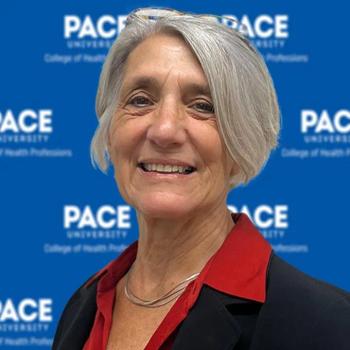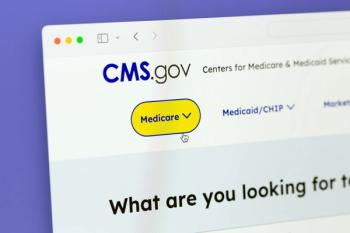
How Kaiser Permanente Made Same-Day Total Joint Replacement the Norm Rather Than the Exception
Patient centricity and physician leadership were among the keys of success of a program that increased the proportion of same-day total hip and knee replacement from 7.2% to 62% in a span of three years.
Total hip and knee replacements used to involve at least one or two days in the hospitals and then several days in a rehabilitation facility. But those lengths of stay have gotten shorter and shorter, and many more patients are getting discharged with no overnight stay in the hospital or a rehabilitation facility.
If not quite the rule, same-day joint replacement is no longer the exception.
In a recent issue of NEJM Catalyst, Kate E. Koplan, M.D., M.P.H., and her colleagues at
Kaiser Permanente described that healthcare system’s efforts to increase the proportion of same-day total hip and knee replacements. When the system’s National Total Joint Replacement Initiative got started in 2016, 7.2% of the roughly 20,000 total hip and knee replacement patients each year were discharged without an overnight stay. By 2019, that proportion had grown to 62%. Now 90% of the system’s total hip and knee replacement patients are offered same-day discharge as an option and the proportion of same-day discharges has increased to 80%. Some of the takeaways that Koplan and her colleagues highlighted included the program’s focus on the quadruple aim (population health, patient experience, provider experience, affordability), a multilayered leadership structure and communication channels. “Even if this initiative had not succeeded, the investment in communication would have been well worth it,” they wrote.
In addition be being the national quality leader for the total joint initiative, Koplan is the associate medical director, quality and safety, for the Southeast Permanente Medical Group in Atlanta.
MHE recently interviewed Koplan about the same-day surgery effort. Here are some edited excerpts of the transcript of that conversation:
Why did Kaiser Permanente set up to increase the number of same-day total hip and knee joint replacement patients?
Okay, I'll list out a few of the reasons at the time from 2015 into 2016. There's a number of reasons. So one reason — and I want to lead with it — is the patient-centric nature of it. Some of our early adopters were having wonderful experiences. And so when we hear that kind of feedback from our patients, we want to learn more and see if we can provide that opportunity to more patients. So number one was patient experience and being patient centric about it.
Number two was future thinking — that more and more surgeries could benefit from and would be appropriate for home recovery. So it's kind of future planning, using the orthopedic service line as a model.
I would say also we were empowering our physicians and physician leadership in this space. We had a few areas — predominantly in California, but across our Kaiser Permanente enterprise — where we have some physician leading these programs, and we love to empower our physicians and physician- led continuous improvement programs. So leveraging physician leadership with the power of our Kaiser Permanente enterprise, and being able really to enable best-practice spread and spread quickly.
Was reducing costs one of the reasons for the program?
I'm glad you brought that up. Because we don't want to skirt around that topic. And cost and cost savings and efficiency, cost effectiveness — those aren't dirty words, those are important words as we bring value to healthcare. And so I think what makes it so acceptable for all of us was how we can lead with the four elements of the quadruple aim. So we mentioned that in the paper, but it’s part of our mission at Kaiser Permanente. It really feels so authentic with this program.
The quadruple aim, the patient centricity of it, and the cost effectiveness of it, those are two parts of the quadruple aim, but also the provider and healthcare team satisfaction. We want our employees and our providers and our physicians to love what they're doing. This was something that brought great joy to them. And then the fourth element, of course, is also quality and safety, which is my job. So it's one of my passions. So making sure we can do all of these sort of changes in the program and keep quality and safety either maintained or even improve it. So we'll talk more about quadruple aim as we get into cost as part of that, for sure.
Please discuss elements of the program that made it successful—the two or three keys to its success.
And so number one, I'm going to start with a patient, again, that patient centricity. Patients loved it, they accepted it, they loved it, they had great experiences. And that naturally enables the culture to grow and for it to spread and to, to succeed in the way that we've seen it. So I'll lead with that. And we also shared some data about the patient experience, that if anything, was improved with a shorter hospital day than the longer hospital day. And so we got that both from a quantitative survey as well as from qualitative patient focus panels and that sort of thing, with the patient voice at the center.
Number two is the physician leadership aspects. Who performs these surgeries? Yes, there are healthcare teams across the continuum. And perioperative teams and health educators and physical therapists and nurses, who are all fantastic and core parts of the team But [orthopedic surgeons] lead this program; my role was, in large part, more facilitating and resourcing some of the political structure and generating national resources. [Orthopedic surgeons] lead the clinical piece. They love the program, they did the surgeries, they talked with the patients. I really can't overestimate the importance of physician leadership.
There were a lot of eyes in the organization on this project to do that. So there's a lot of pressure. And we also were able to leverage a fair amount of resources in terms of analytics and just structural resources to support the orthopedic teams.
I think we successfully utilized performance improvement tools to be streamlined and organized with how we did the spread, and so it was really a successful spread example that we can bring to other service lines.
You have also discussed performance measures has been key. Could you flesh that out a little bit?
You want to organize your path to performance through clear targets and goal setting, and you want to do that in a realistic but aspirational way. And you want to show that you're committed to this overtime, and how can you build, build, build to get success.
This is a patient-centered program, and we're focusing on the quadruple aim and it's OK for us to talk about all four elements of the quadruple aim. We built a balanced scorecard, at the practice level, at the region level, and then at the enterprise level, so it was very multi layered, so o it could be owned locally, always, with local goals set by the local regions, always. And then we just took a look at it from the national standpoint, just to help connect the dots and sort of do the math additively.
Definitely one of the goals was zero midnights [in the hospital]. That’s a combination of an efficiency measure, but there's some cost savings on the back end of that and that's, you know, also an effectiveness measure.
We also looked at patient care experience measures. And then we also looked at provider satisfaction measures over time, quantitatively and qualitatively. And we also looked at quality and safety measures — return to care within seven day [of the procedure], 30-day return to care, infections, and revisions.
There was zero flexibility with the quality and safety measures, they either had to stay exactly the same or improve.
Did you have to pause at any point, either on a national or regional level, because you were picking up a signal about some issue with quality? Or maybe patient satisfaction or provider satisfaction? What was their need to pause at any point?
So from an enterprise level across those four things, the answer is no. Full stop.
Occasionally, over the course of those four or five years, you might see a change in the slope, or a little blip. There may be one locality or region where we might see a blip in terms of return to care, like either seven day or the 30 day. And the second we saw that we would talk with the region or they may have noticed it first because they manage it. And they might pull a bunch of charts and they might do a quality review. They might do an infection prevention review.
You specifically asked about provider satisfaction. We conducted two provider satisfaction surveys. And if we saw a little change in the second one or a little blip on the first one that we needed to address, we'd work with a local leadership to create an improvement plan around that.
We never saw a downward blip [in patient experience] across the enterprise and we kept a close eye on that. So that was wonderful, and supported our idea that this was patient centric, and that they liked it.
Were there any any financial incentive for the groups to move towards more same day joint replacement surgery?
There was no direct financial incentive either to the providers or to the region's actually. There was also no direct financial investment in any of these programs from the national level to the region's.
There was no direct financing of this program. I want to be very clear with those answers.
(But) it's not a dirty word to talk about cost savings and cost effectiveness as part of the quadruple aim. The more value that you can bring to the system and, of course, to your patients, that gives more resources to invest elsewhere. You can look at a few ways you can reinvest those resources that you saved back into your orthopedic programming in terms of health education and wraparound services, service that enhance patient care experience and quality and safety.
Newsletter
Get the latest industry news, event updates, and more from Managed healthcare Executive.




















































